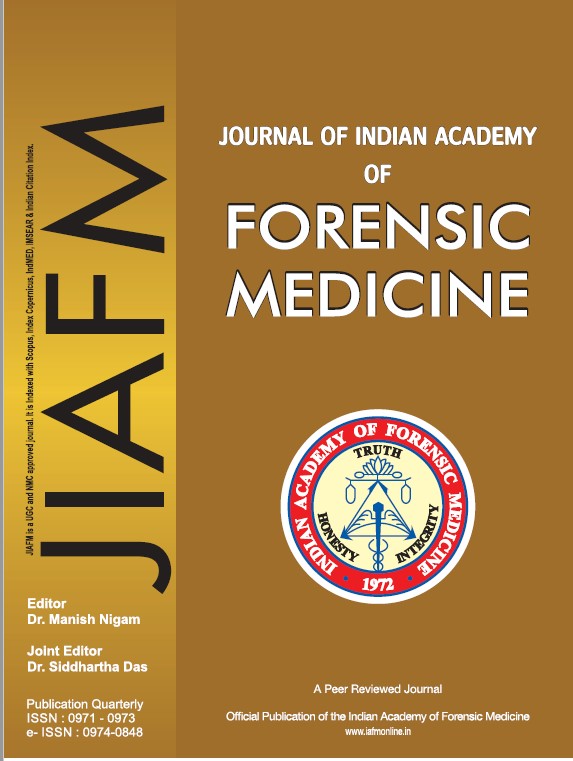Detection of Foreign Bodies in Air Passages in Drowning – An Autopsy Based Comparative Study between Light and Polarizing Microscope Examination.
Keywords:
Drowning, Foreign bodies, Air passages, Light microscopic examination, Polarizing microscope, Sand particlesAbstract
The diagnosis of drowning poses a difficult situation for a forensic pathologist especially when the body is in a decomposed state or mutilated. There is no objective morphologic finding which is pathognomonic of drowning. Presence of foreign bodies in the air passages especially in the terminal ones has been regarded as a significant finding by many authors. Minute foreign particles cannot be detected by naked eye examination, which are better picked up by a light microscope. Apolarizing microscope can more efficiently detect crystalline particles like sand which has birefringent property. They can be used to detect foreign bodies which may go unseen under the naked eye or light microscope. Data from 100 cases of drowning brought for autopsy to the mortuary wing of Department of Forensic Medicine, were collected and analysed with respect to their sociodemographic profile, external as well as internal features of drowning, presence of foreign bodies in air passages by naked eye examination, light microscopy and examination under polarizing microscope. The presence of foreign bodies were seen in 36% cases on naked eye examination, 46% cases under light microscopy and 71% cases under polarizing microscope. The p values were obtained as significant, but polarizing microscope can be considered a better tool as examination under light microscope is more difficult and requires more expertize.


